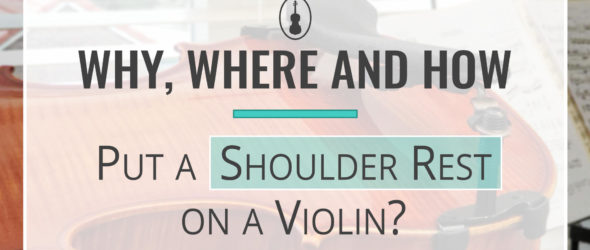
Your violin shoulder rest: you use it every day, so you better feel comfortable with it!
Whether you prefer a bulky shoulder rest or no shoulder rest at all, the ideal solution is one that takes you through your practice session no matter what length. In the best-case scenario, it also doesn’t fall on the floor too often…
To make sure you will feel comfortable with your shoulder rest set-up, I created this essential guide to using a violin shoulder rest. In it, I answer all your questions about shoulder rests, from how to put it on the violin to the pros and cons of playing with and without it, and everything in between.
Read on to learn all you need to know about using a violin shoulder rest!

Choosing a Violin Shoulder Rest
There are four types of violin shoulder rests that you can choose from:
1. Pre-shaped Pad Shoulder Rests
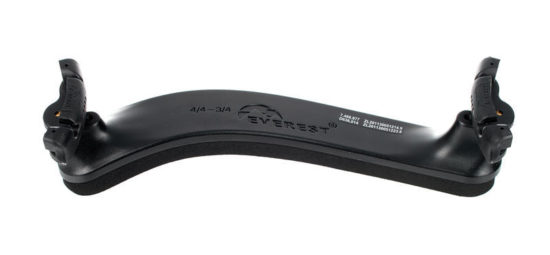
Pre-shaped pad shoulder rests are usually adjustable in height and angle, but have a pre-shaped ergonomic pad as a base. The base is mostly made out of plastic. If your shoulder shape matches the pre-shaped pad these rests can feel very comfortable. As there are usually no metal parts in this type of shoulder rest, the cushions can feel very soft. Violin teachers like to use these shoulder rests for big groups of students as they can quickly and easily be positioned on the violin.
2. Flexible Metal Shoulder Rests

Try using a bendable metal shoulder rest if you want greater control over the shape of the body of the shoulder rest. These shoulder rests can be bended by hand to adjust the shape of the metal. The downfall about metal shoulder rests is that it can be difficult to bend them exactly to your shoulder shape. However, these shoulder rests are sometimes still preferred by professional players, because of the amount of control they give the violin player over the shape.
3. Pad & Cushion Violin Shoulder Rests

4. Miscellaneous

Some players use other common household objects such as sponges or towels between the violin and their collarbone to give extra support.
These objects can also be used in conjunction with a regular shoulder rest. Some professional players like to play with a shoulder rest and use a towel to protect their neck from touching the metal part of the violin.
If you already have a shoulder rest, make sure you install it on your violin the correct way.
How to Put a Shoulder Rest on Your Violin?

Regardless of the brand, all rests have a wider curved part and a thinner part. You’re going to want to place the wider side of the rest on the side of the chinrest. If you are using a center mount chinrest, that means the wider part is on the side of the G string.

The tricky part about putting a shoulder rest on a violin is trying not to drop your violin while doing so. Therefore a safe way to do this is to:
Step 1. Place the violin on your lap

- Take the time to sit down on the edge of a seat. Your knees out in front of you.
- Place your violin on your lap with the strings facing up.
Step 2. Hold the violin between your legs

- Take your violin with both hands and place it between your legs. With the back facing you and the scroll pointing to the floor. The body of the violin will be pointing toward the ceiling.
- Your legs should fit nicely in the rib area of the violin.
- Squeeze your legs ever so slightly to hold the violin in place.
Step 3. Attach the feet of the shoulder rest to the violin

- Take the shoulder rest. Place the wider part onto the same side as the chin rest as mentioned above. Make sure that the rim of the violin fits nicely into the c shape of the feet on the rest. Slide the feet of this wider side to a 9′ o clock position.
- Slide the other feet onto the outside of the violin stopping at sound the 3’o clock position.
Step 4. Adjust the placement of the feet of the shoulder rest

- Adjust it by sliding the feet to an angle that fits your shoulder. Make sure it is secure.
- If your shoulders are narrow, move the feet closer to the end pin.
- If you have wider shoulders place the shoulder rest further away from the end pin, in the middle of the lower body of the violin
What if you are standing?
If you are in a position where sitting down is inconvenient, here is a great video showing how to put on a rest while standing:
Where to Put a Shoulder Rest in a Case?
All violin cases are built differently but most come with a compartments for you to keep your shoulder rest and any other accessories you may have.
It depends on your case which way of storing your shoulder rest is best:
If the violin case has a special place to insert the shoulder rest
In case the violin case has a special place to store the shoulder rest, put the shoulder rest in the designated compartment.
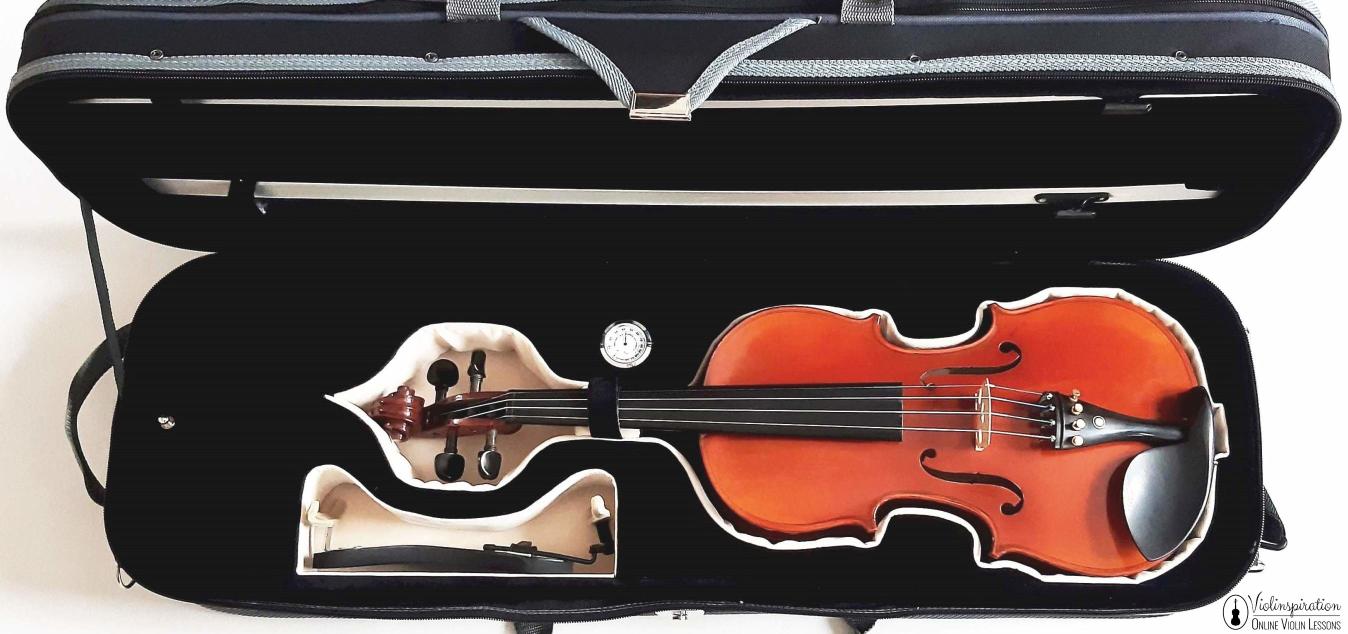
Depending on the shoulder rest that you chose, your shoulder rest might not perfectly fit in the compartment. In that case you might like to choose to either decrease the height of the shoulder rest before storing or store the shoulder rest outside of the case.
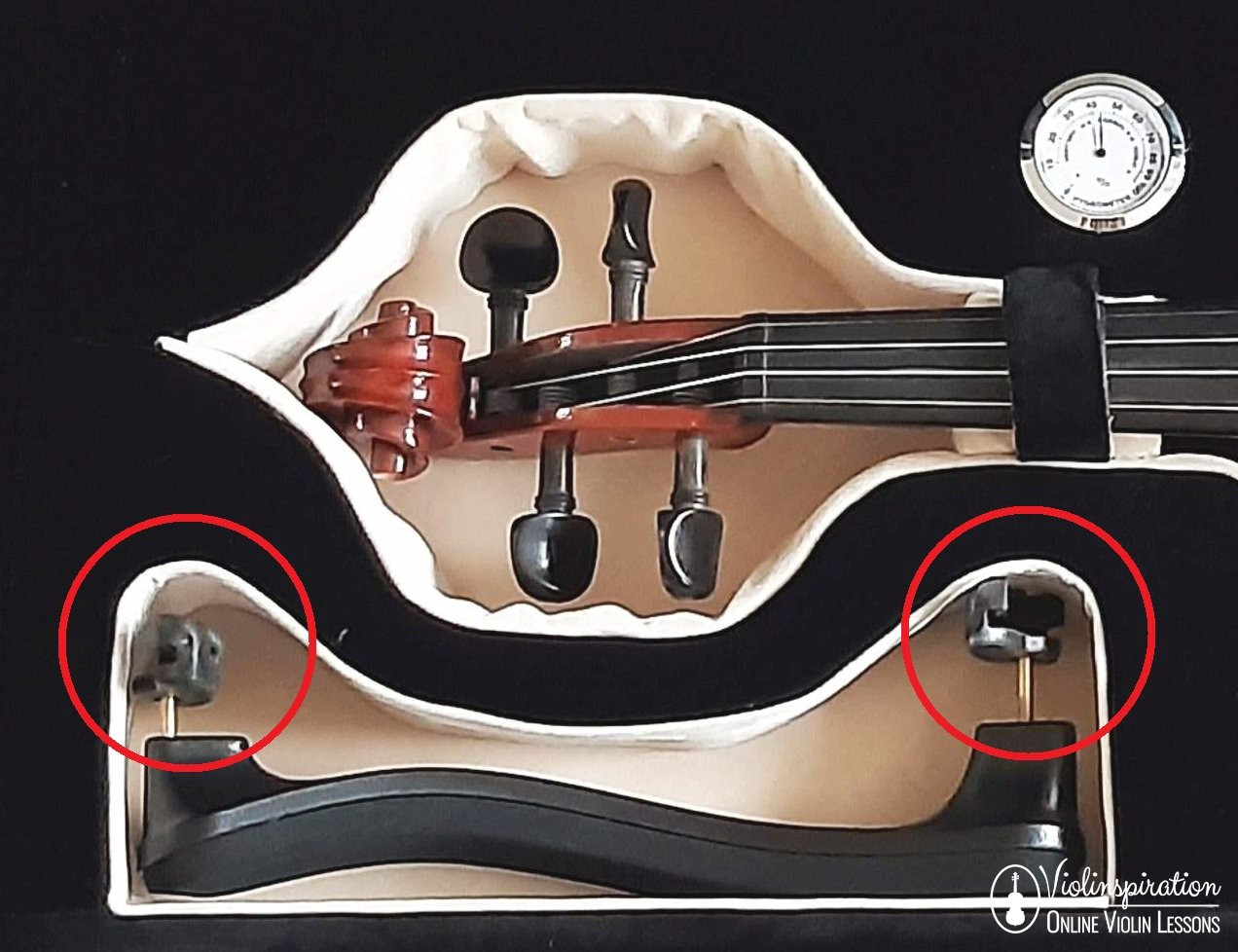
If the violin case has no special place for the shoulder rest
If you don’t have a compartment in your case, there is usually space under the neck of your violin to store it. Rotating the feet of the shoulder rest might be necessary in order to store it.

Some shoulder rests might not fit near under the neck of the violin. In that case you can add your shoulder rest in your sheet music compartment or carry it seperately.
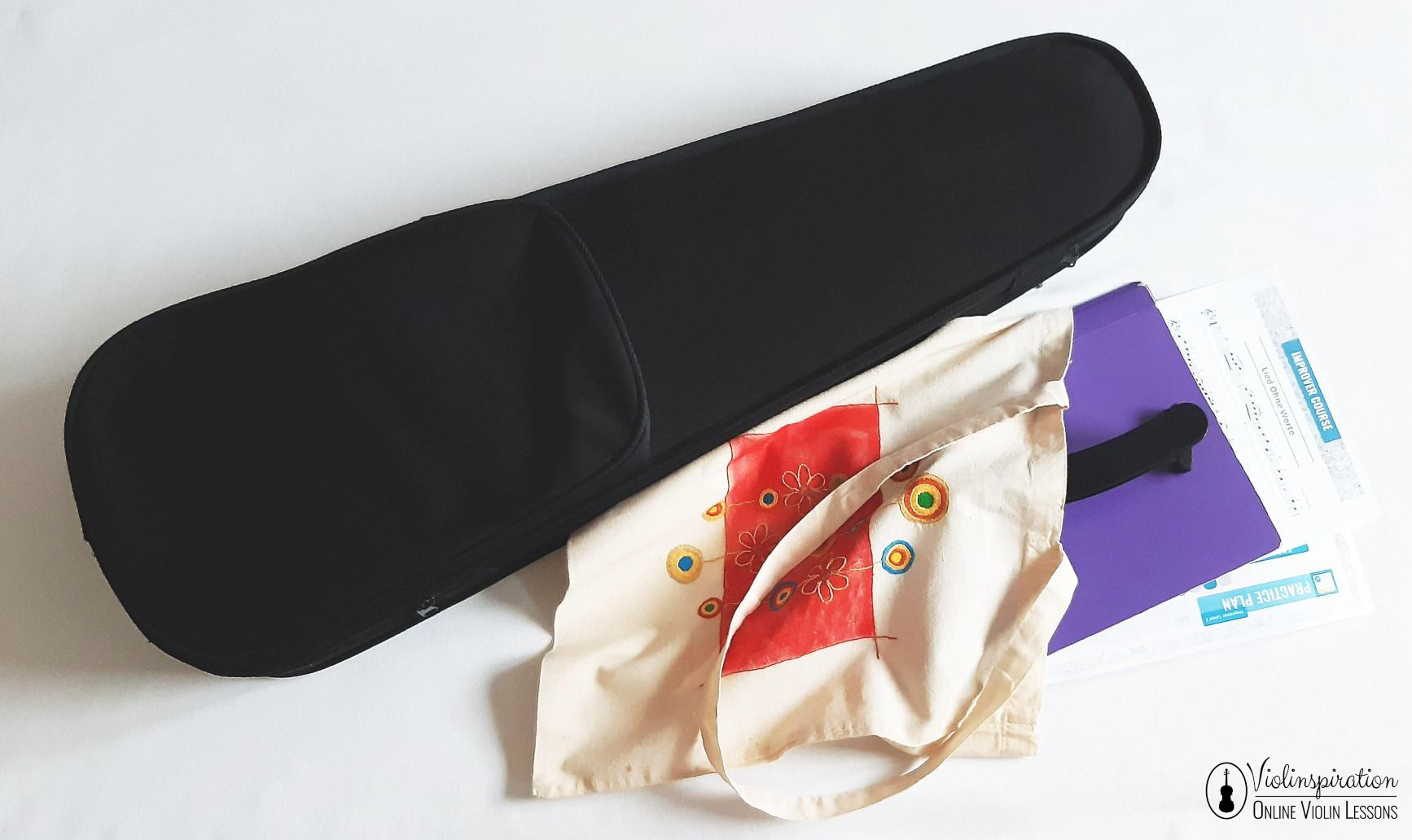
Storing an electric violin shoulder rest
Electric violins often have a full body including a shoulder rest that is non-detachable. In that case, the rest can be kept on the violin when putting it in the case.
If your electric violins have a detachable shoulder rest, you can place it either in the same way as a regular violin shoulder rest, or next to the violin as shown on the picture below:
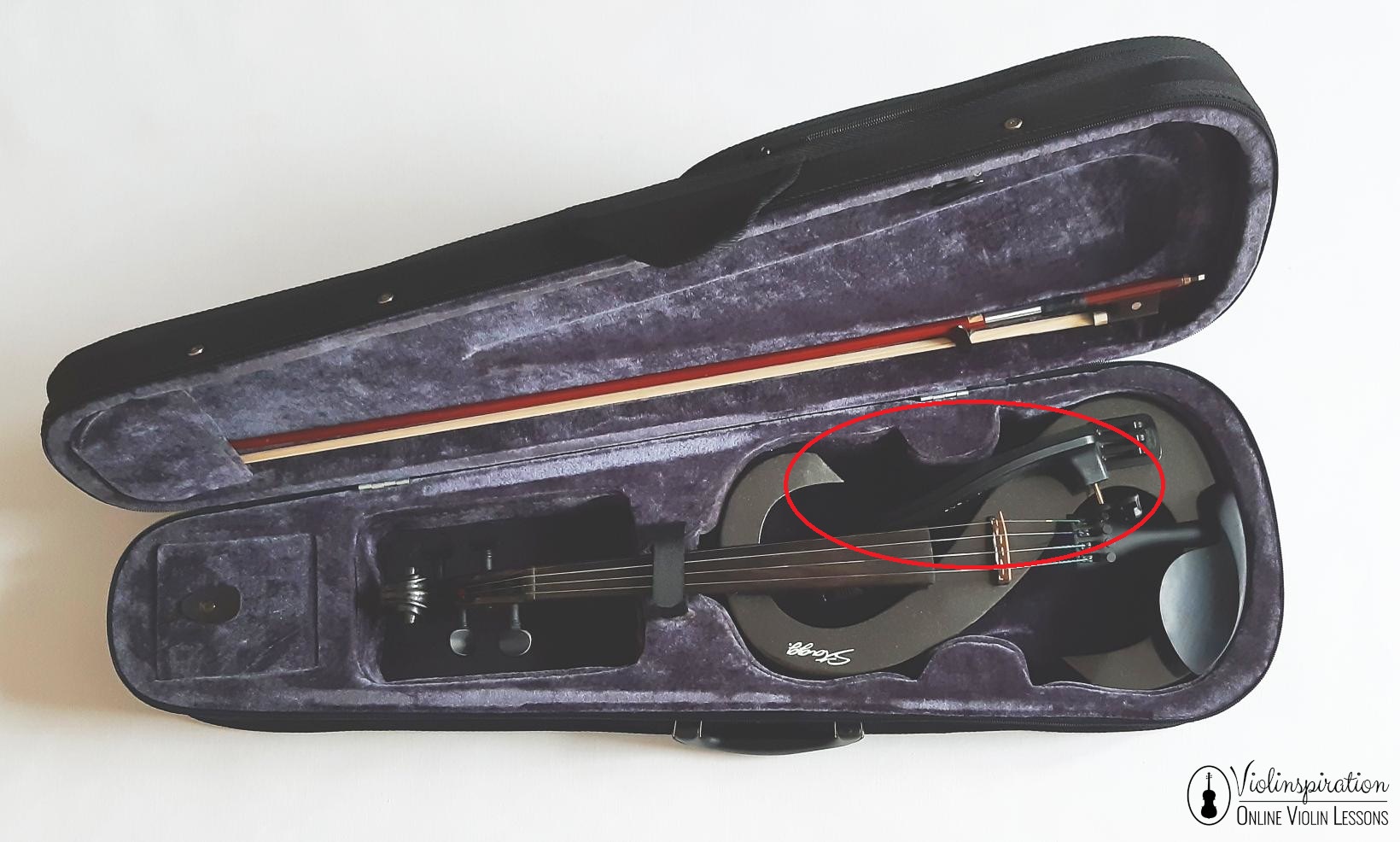
How to Fit and Adjust a Violin Shoulder Rest?
Once you’ve put your shoulder rest on your violin properly, it is time to fit and adjust it so that you can play. To do this, follow the following steps:
Step 1: Adjust the Pad contour
This step is only applicable to flexible metal shoulder rests. If your pad is made out of plastic or pre-shaped, directly skip to step 2. If your current shoulder rest does not match your collarbone, you should consider one that is bendable.
If you have a flexible metal shoulder rest, make sure the pad of the shoulder rest is following the shape of your collar bone. Bend it with your hand and shape it to fit.
Step 2: Adjust the Height of the Shoulder Rest
Make sure the height of your rest is adjusted so that you can place your chin on it comfortably.
If you have to bend your spine and lower your chin to reach it, the shoulder rest is too low. Additionally, if your neck is stretched upward so that your head is tilted to the right, the height is too high.
Make sure that the shoulder rest is placed so that your chin naturally falls into the chin rest. When you play the violin, your spine should be in a neutral position.
Step 3: Tilt the Shoulder Rest to Your Desired Angle
When your rest has a proper tilt, the pad fits completely on your shoulder. If it does not do this completely, you should look for a rest with an adjustable tilt.
Step 4: Adjust the width of the shoulder rest
The width is the angle of the rest while on the violin. This would be how far or how close to the tailpiece you’ve attached the feet. If you have narrow shoulders, the feet are closer to the tailpiece at the base. So your angle is slightly different from a player with a wider shoulder. Someone with wider shoulders would have the feet attached to the sides of the body.

Is a Shoulder Rest Necessary?
Technically it is not necessary to use a shoulder rest. But it really makes playing a lot more comfortable. If you find yourself needing to raise your left shoulder to hold the violin, then you need a shoulder rest.
Short History of the Shoulder Rest
There was a time when you didn’t need to decide whether to use a violin shoulder or chin rest. Because neither was invented yet!
When was the violin shoulder rest invented?
The chin rest was invented in 1820 by Louis Spohr. Following the chin rest, the shoulder rest appeared in the 20th century. Before that, violinists would use handkerchiefs and pads to help hold the violin in place.
Who invented the violin shoulder rest?
At first, a bent wire was connected to the chin rest. You can see an example on the image below, in Frederick W. Becker’s US patent no. 775,792, 22nd November 1904. Just a few years later Gustav L. Becker patented another version of a chin and shoulder rest combination – US patent no. 908,541 dated on 5th January 1909.
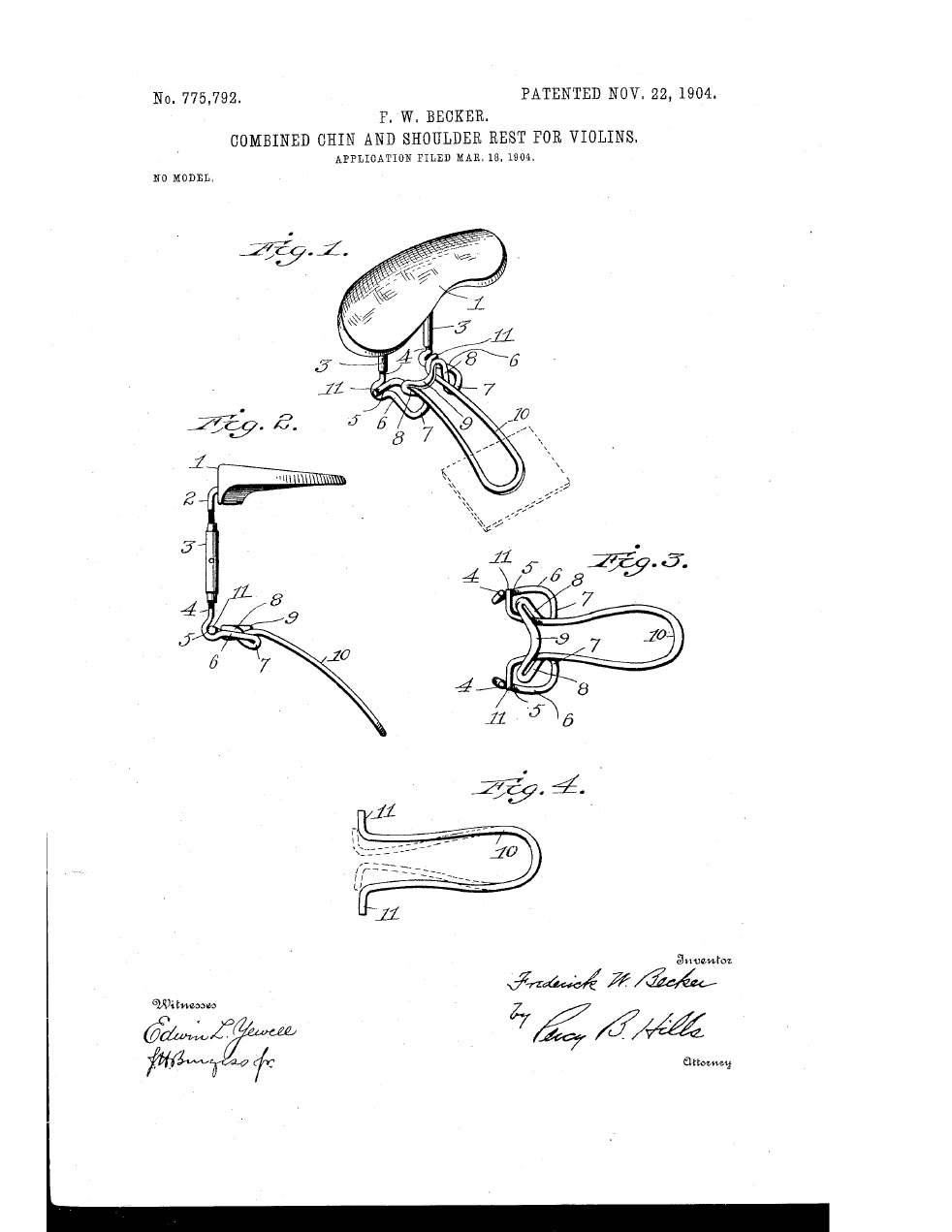
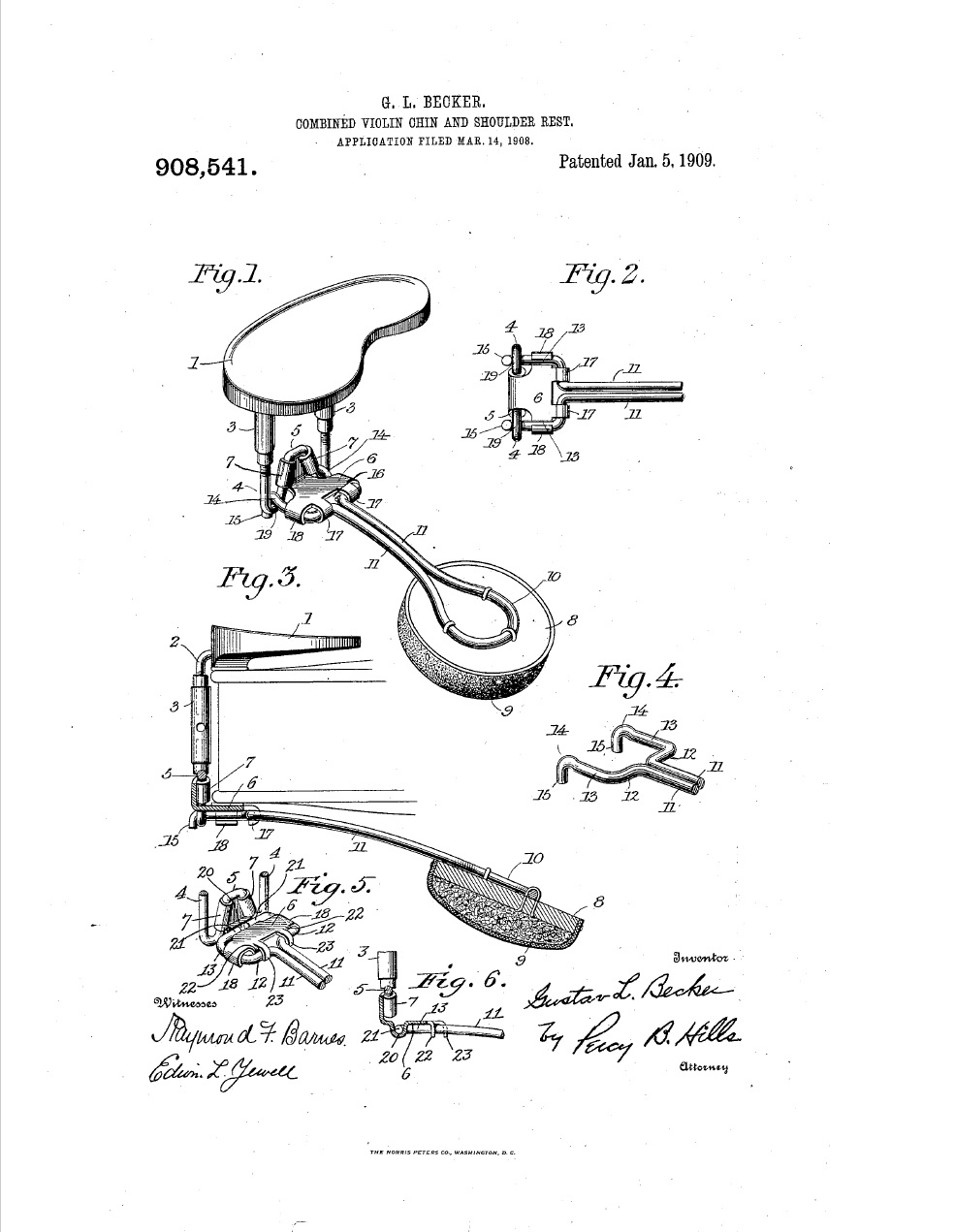
But, the credit for the first stand-alone shoulder rest goes to Erno Mier Goldberg from Israel. The date of the patent is 19th September 1950.
Here is an image of the original sketch Erno gave with his request to the U.S. patent office on 21st December 1948:
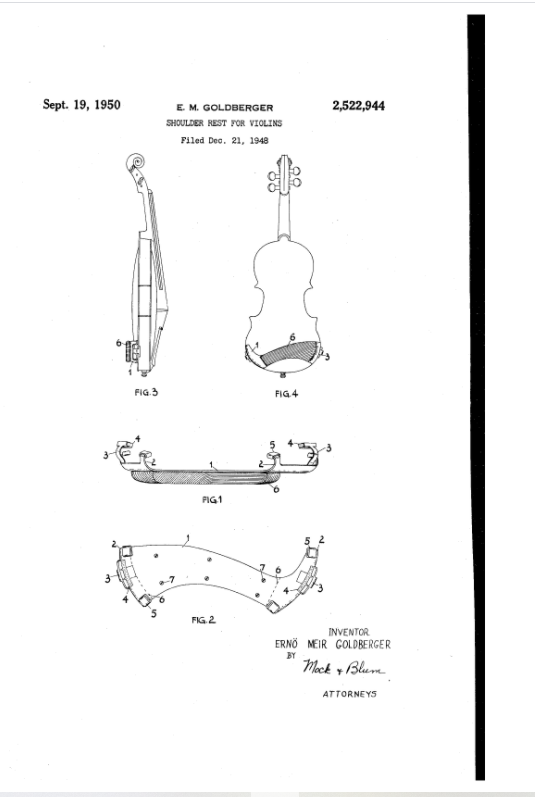
Why was the shoulder rest invented ?
The simple reason or goal of the shoulder rest is to help hold the violin. It adds height and helps prevent your instrument from slipping. This in turn, will help ease chronic pain that many violinists experience. Players with a longer neck tend to lift their shoulder to hold the violin in place when playing without a rest. Using a shoulder rest would prevent them from doing so.
What Are the Pros and Cons of Playing With and Without a Shoulder Rest?

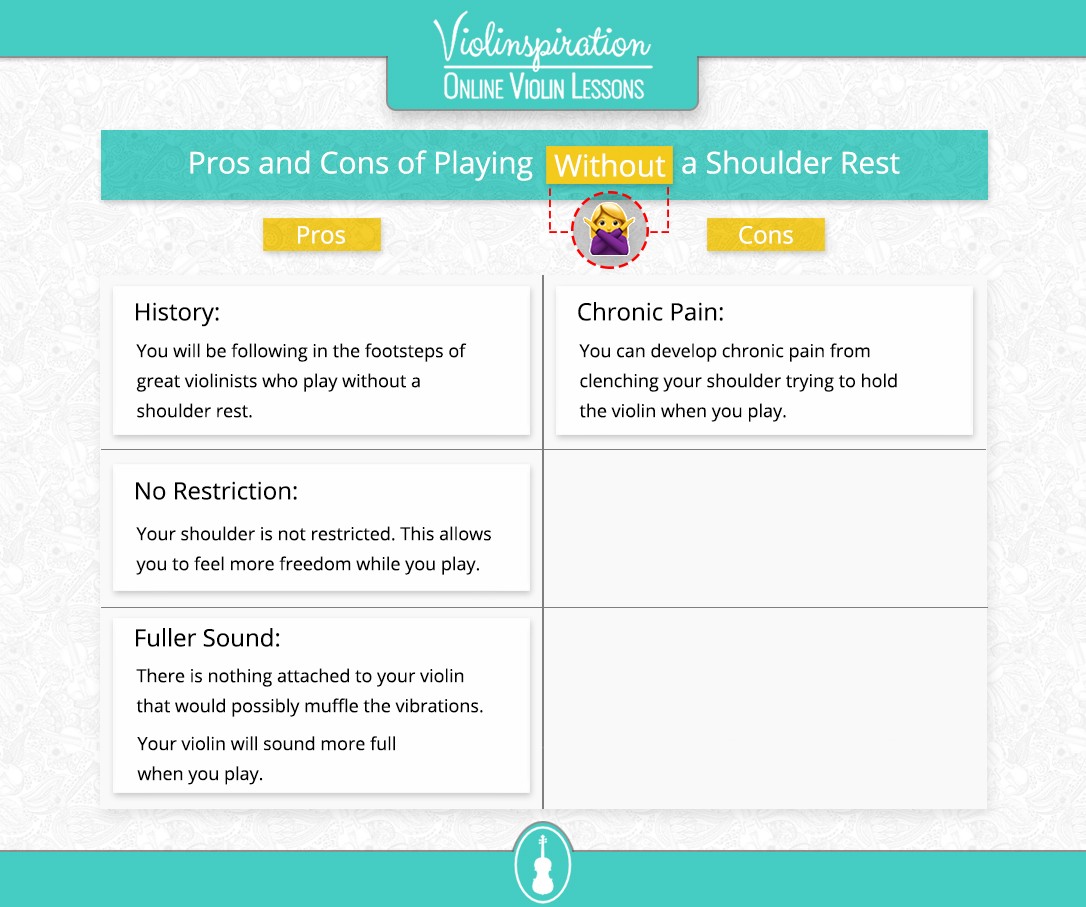
Do Professional Violinists Use a Shoulder Rest?
There are professional violinists who do use a rest, and some who play without.
Violinists who play without a shoulder rest
Anne Sophie Mutter
Jascha Heifetz
Itzhak Perlman
Violinists who play with a shoulder rest
Hilary Hahn
Leonidas Kavakos
Frank Peter Zimmerman
A Final Note
With the proper fit, a violin shoulder rest can make playing feel more comfortable! This allows you freedom from worrying about your violin slipping.
Choosing a shoulder rest is a very personal decision. Your chin rest should work well with your shoulder rest. That means it may take some trial and error to find out what works for you.
Some violinists even find more physical freedom when playing by choosing not to use a shoulder rest.
If you can, go to a local music shop and try out several different shoulder rests. A good music shop will offer you to try out different shoulder rests and even spare parts if needed. If you don’t have a music shop nearby, check out my buying guide with product reviews.
Whatever you decide, choose what is the most comfortable for you.
Enjoy your week of practice ahead!

























